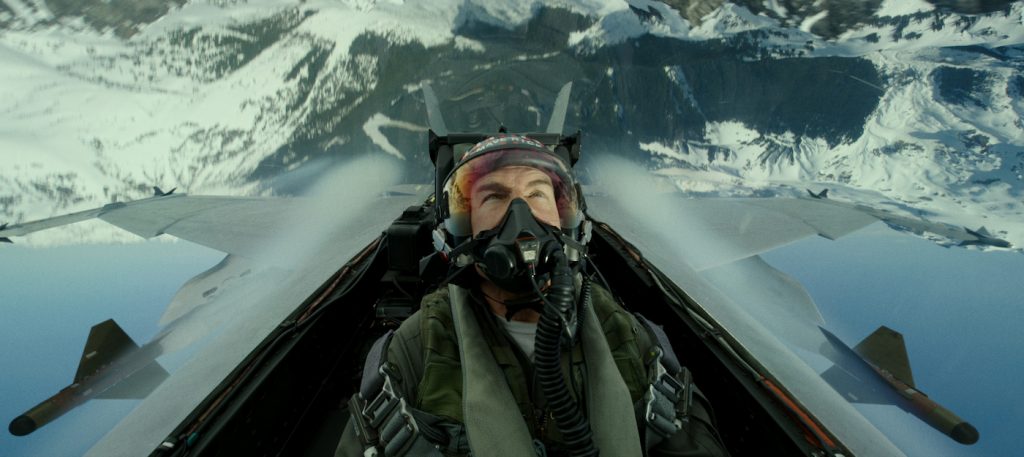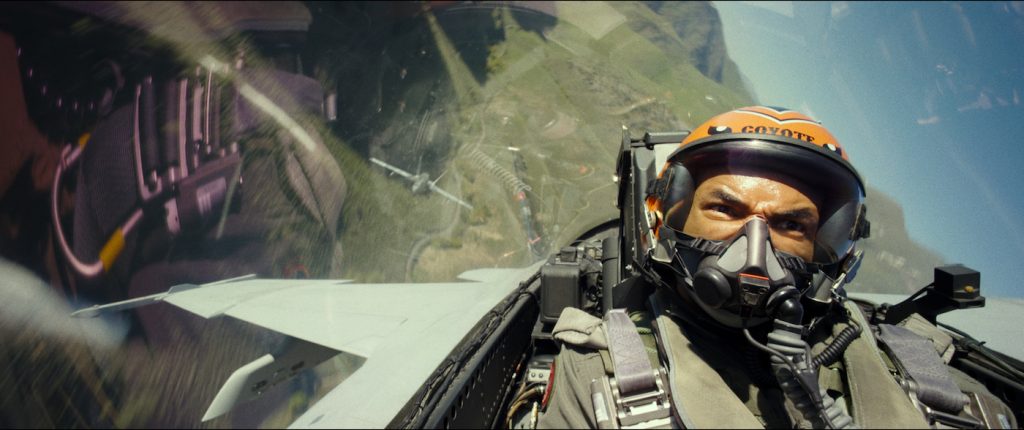Best of 2022: How the “Top Gun: Maverick” Sound Team Ingeniously Captured Raw Emotion Mid-Flight
It’s that time of year—we look back on a few of our favorite interviews from 2022 in our annual year-end list.
Mark Weingarten is no stranger to navigating the challenges of a production sound mixer. Over his accomplished career, Weingarten’s mixed on Christopher Nolan’s WWII epic Dunkirk, traveled to another dimension in Interstellar, captured the spirit of Katniss Everdeen in The Hunger Games, and tracked the drama behind The Social Network and The Curious Case of Benjamin Button. In director Joseph Kosinski’s world-beating Top Gun: Maverick, the hurdle was finding a way to usably record the actors’ dialogue inside fighter jet cockpits pulling up to 7Gs.
The journey for Weingarten began with a heavy dose of research and preparation. Since Kosinski sought to have all the inflight dialogue recorded, whether it was plane to plane communications, plane to ground, or an actor saying something to themselves, like when Tom Cruise whispers one of Maverick’s iconic lines, “Talk to me Goose,” the sound mixer needed a solution for every possibility. On top of that, production would be using the working flight masks worn by pilots which, at times, would be covering the actor’s faces while needed oxygen flowed through them.

“Initially in prep I thought about running a microphone into their masks but decided against it because the masks are fully functional, providing oxygen as well as enabling critical communications,” says Weingarten. “I didn’t want to do anything that could possibly interfere with any of that. I knew there already was a microphone built into the mask, I thought if there was a way I could tap into that existing microphone, I might be able to record the inflight dialogue, then listen to it during dailies and hear if the quality of the audio would be acceptable to use in the final film. I thought we should also put another lavalier microphone on their survival vests, which is their outermost garment, in case there were dialogue scenes among the actors with their masks hanging open.”

During an early tech scout, Weingarten pieced together some of the puzzle. “I was able to connect with the Navy’s internal plane communications department, which oversees all the internal communications in the planes, and they showed me all the places where I could possibly tap in to record the dialogue. The only problem was that every option was no good for one reason or another,” he says.
Diving into the matter further, the sound mixer learned that there is a connection on the inside of the survival vest that could allow him to record the dialogue. Weingarten touched base with the Navy’s Aircrew Survival Equipmentment (PR) department, which oversees the survival vests and oxygen masks. After the visit, he was able to confirm his idea of tapping into the vest to record the microphone audio from the mask.
The camera setup inside the F/A-18F cockpit was elaborate. Cinematographer Claudio Miranda (with the help of 1st AC Dan Ming and key grip Trevor Fulks, who sadly passed away from stage four metastatic esophageal cancer before the film’s theatrical release) configured six Sony Venice cameras, four looking back at the actor and two looking forward. Miranda opted to use the Sony Rialto Camera Extension System, which allows the sensor and lens to be separated from the camera body, for one of the cameras looking back at the actor and two looking forward over the pilot’s shoulder. Everything was wired so the actor could flip a single switch to start recording all six cameras along with the sound recorder. This was done for two different fighter jets in addition to the coverage captured jet to jet or helicopter to jet.
For sound, Weingarten originally recorded directly from the microphone from the pilot’s mask using a special adapter that he had custom-made, which connected the cable from the survival vest into a Lectrosonics SM wireless transmitter. The audio would then be transmitted to a Lectrosonics 411 receiver which was connected to a Sound Devices 744T recorder and mounted inside the cockpit. Similar to the camera setup, the audio could be triggered to start or stop recording via the remote. The sound team also placed a secondary wireless lavalier and Lectrosonics SM transmitter on the actors for dialogue without their masks.
“The first time we got to try out the setup was with Tom’s [Cruise] initial flight while he was acting. Everything through the mask microphone and the secondary lavalier sounded great,” says Weingarten. “But when we were watching dailies, Tom noticed something in the frame, just over his shoulder. It turned out to be the Sound Devices 744T and the 411 receivers. We had to figure out another solution.”
Back at the drawing board, Weingarten found a way to simplify the setup even further. “I ended up buying several Lectrosonics PDR recorders, which can record audio directly from a microphone source and sync timecode. They are about the same size as the Lectrosonics SM transmitters and could fit inside the survival vests. It meant we no longer needed the Lectrosonics 411 receivers or the Sound Devices recorder.”
The streamlined setup did however have one hiccup. The actors would no longer be able to trigger the start/stop recording through the remote setup which Cruise (who also served as producer) asked for specifically. Instead, the PDR recorders would start recording just before the actors put on their survival vests and would remain recording from takeoff until landing. “My boom operator Tom Caton and I talked directly to Cruise about the change and he could not have been cooler. Tom was incredibly nice and said it was a great solution,” says Weingarten.
With the new setup, the Lectrosonics PDR was connected directly into the microphone inside the mask via the survival vest where both picture and sound were synced via timecode. A second PDR and lavalier were initially used to record the “mask off” audio but during production, Weingarten found the audio from the mask microphone “was great even for the scenes when the masks were open.”
“Over time we scrapped the second lavalier and went down to one microphone,” says Weingarten. “The main reason is this thing the Navy calls Foreign Object Damage (FOD). It concerns any objects that can come loose during flights and potentially cause a crash. It’s a big concern, so the more minimal we went the better. In the end, all the inflight dialogue was recorded from the connections in the vest, and there wasn’t one line looped.”
Weingarten replicated the solution for each flight, of which there were hundreds, to capture the epic aerial sequences in the film. The audio was recorded onto a 16GB microSD card that slid into each PDR. “Before each flight, we would place a PDR inside the actor’s survival vest, start recording, and then retrieve it at the end of the day. The nice thing about the PDRs is you can split a mono input and reduce one channel of audio down -20dB, so if the audio starts to over modulate on one channel, the second channel will be fine.”
Looking back, the sound mixer recalls it was “one of the nicest, most collaborative movies” he’s been on. “Joe is one of the nicest director’s I have ever met. He’s super kind, respectful, smart, and well prepared. He really made it a delightful experience. Plus, everyone on the cast and crew was very helpful. We all had to navigate working with the Navy and their rules and everyone was there to help each other out.”
For more on Top Gun: Maverick, check out these stories:
Tom Cruise’s “Top Gun: Maverick” Makes History Again
“Top Gun: Maverick” is the Highest Grossing Movie of the Year
Tom Cruise’s Historic “Top Gun: Maverick” Opening Weekend
Going to Flight School With “Top Gun: Maverick” Stars Glen Powell & Greg Tarzan Davis
Featured image: Tom Cruise plays Capt. Pete “Maverick” Mitchell in Top Gun: Maverick from Paramount Pictures, Skydance and Jerry Bruckheimer Films.



